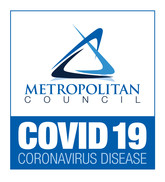


The following is a special issue of the COVID-19 update, given changing conditions.
Plans to return teleworking employees on pause, following guidance from the State of Minnesota
Teleworking employees should continue working remotely through at least Jan. 31, following new guidance from the State of Minnesota regarding returning teleworking employees to the office.
Prior guidance suggested Met Council departments should begin transitioning teleworking staff to the office after the new year. With the emergence of the Omicron variant and uncertainty regarding conditions, the state has paused its return plans with no specific timeframe for further discussion.
At the Met Council, we will continue to regularly evaluate conditions, giving employees at least a month’s notice prior to fully transitioning employees back into the office.
In the meantime, employees may continue to come into the office when necessary if they choose. Employees are also expected to return if requested by their managers for specific business needs that require onsite work. The ultimate goal of this pause is to continue to minimize the number of people onsite who don't need to be there to complete their work, so that those who do need to be onsite are limiting their interactions with other people to what's absolutely necessary.
We’ll continue to monitor conditions and work with the State of Minnesota to consider options for transitioning teleworking employees back to onsite work.
Watch this email for more information – or visit the FAQs on MetNet – as conditions continue to be dynamic. Thank you for your patience with this uncertain and challenging situation.
|
Omicron variant identified in Minnesota this week, amid significant outbreak taxing hospitals statewide
The Minnesota Department of Health today announced that its Public Health Laboratory has found the variant of the COVID-19 virus known as Omicron in a specimen from a Minnesota resident with recent travel history to New York City.
The variant was found through the state's variant surveillance program, which is one of strongest surveillance programs in the nation. Having a robust virus surveillance system in place allowed the state to quickly identify Omicron once it entered the state and made it more likely that Minnesota would be among the first states to find the variant.
Minnesota's rate of new COVID-19 infections is one of the worst in the nation, bringing our hospitals closer to capacity limits. It's important to understand the seriousness of the situation as we head into winter, with more time spent indoors and many people looking to gather with others to celebrate holidays.
Find testing and vaccine information on the state's website at MN.gov/COVID19. Learn more about the virus, the current situation in the state, how to protect yourself and others, quarantine guidelines, and more on the Minnesota Department of Health's website.
Do you have thoughts or concerns on the content or frequency of these COVID-19 update emails? We would love to hear your feedback through the online COVID-19 form, so we can make sure these emails are providing the most useful and timely information to staff.
|